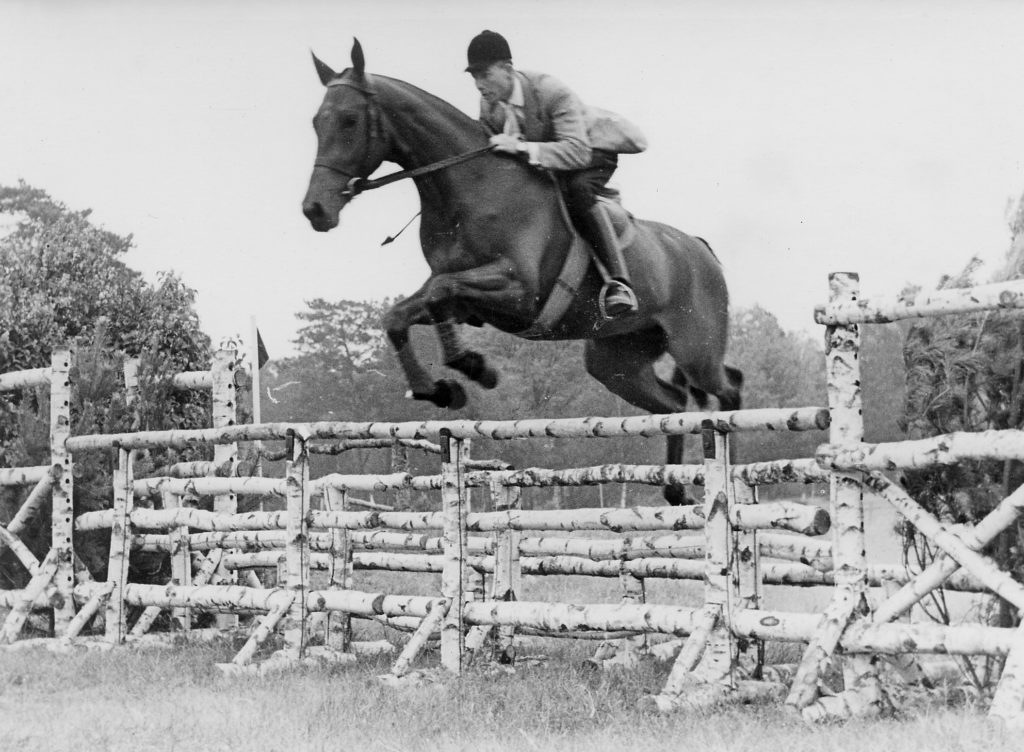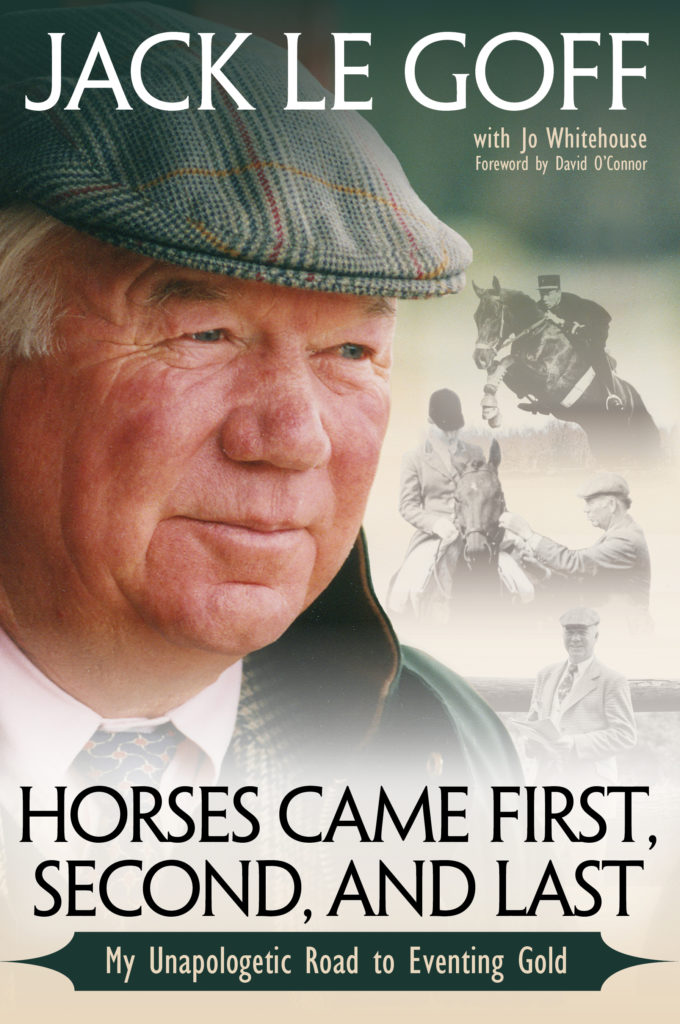This excerpt from Horses Came First, Second, and Last by Jack Le Goff is reprinted with permission from Trafalgar Square Books (www.horseandriderbooks.com).
In this excerpt from Horses Came First, Second, and Last by renowned USET coach Jack Le Goff, he shares tips for using cavalletti for schooling jumpers.
The simplest form of jumps are cavalletti. Once the horse can walk over one and then trot over it, I like to set up five cavalletti in a straight line 4 feet 6 inches apart. At first, I pull numbers 2 and 4 out of the line and make the horse walk and then trot over those two. Then I make the horse walk, then trot over cavalletti 1, 3, and 5. After that, I bring in 2 and 4 and make the horse trot, not walk, over all 5. Do not let the horse jump them; he must trot them.
For the more experienced horses, when they are comfortable with this exercise on a straight line I set up the cavalletti on a curving line. I use the corner of the arena and set them using a 20-meter circle as the basis for placement. The cavalletti are set on the line of the radius from the center point of the circle. It is of the utmost importance that the distances between the rails are very precise. The distance from one cavalletto to another on a line through the center should be 4 feet 6 inches. On an outside line, the distance will be no more than 6 feet and on the inside line no more than 3 feet 3 inches. These precise distances will give you the opportunity to work the horse through at a normal stride in the center and then lengthen the stride on the outside and shorten on the inside according to what your horse needs. Please note that the cavalletti on a curve require a well-schooled horse-and-rider combination and should not be used with a green horse. It is a great test of good riding.
There are numerous benefits to training over cavalletti, and in my book, the most important one is the mental impact on the horse’s mind. As I have said, cavalletti are the simplest form of jump, and tackling several cavalletti in a row is the simplest form of a combination. It is essential to make sure of your distances, as the horse will quickly realize that he can comfortably go over all those rails on that line without losing his mind, or as I like to say, “bicycling through the sauerkraut.”
Another benefit of using cavalletti is the balance developed through the coordination of the rider’s aids regulating the horse’s rhythm. This brings cadence to the trot and is a good exercise for the top line. For me, though, it is the mental and psychological benefits that are at the top of my list and the development of obedience to the rider’s aids.
While I was at Gladstone from 1970 to 1974, I saw possibly the best master in the world using cavalletti and gymnastic work for the show jumpers. His systematic method of training the young horses, as well as refreshing the international-caliber horses, made me realize that it is not only a way to educate your young horses, but it also provides an excellent return to the fundamentals for the Grand Prix horses that have been chased at speed in jump-offs against the clock all season. Of course, I had used cavalletti and gymnastics in Europe before coming to the States, but if I needed to be convinced of the value of the principle, I certainly got that by watching Bert de Némethy. He was not only a master of that but also of longeing horses over jumps. What a privilege!
I know that a lot of people use gymnastics following a cavalletti line. I did try this for a while, thinking that if it was used by so many people, then it had to be okay. After a very thorough try, too many times I saw a horse missing a step in the cavalletti line and being in real trouble when he tried to tackle the gymnastic. Being the firm believer that I am in both exercises, I separated the two.
Pick up your copy of Horses Came First, Second, and Last from Trafalgar Square Books HERE!


